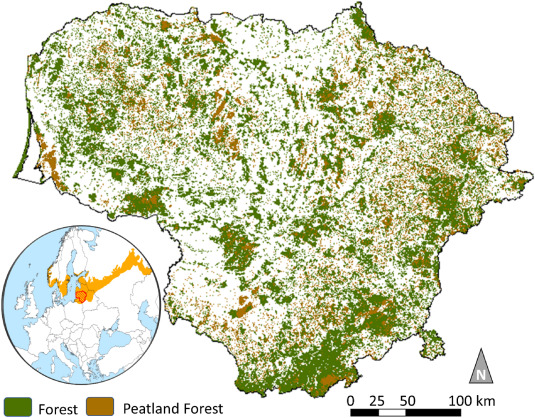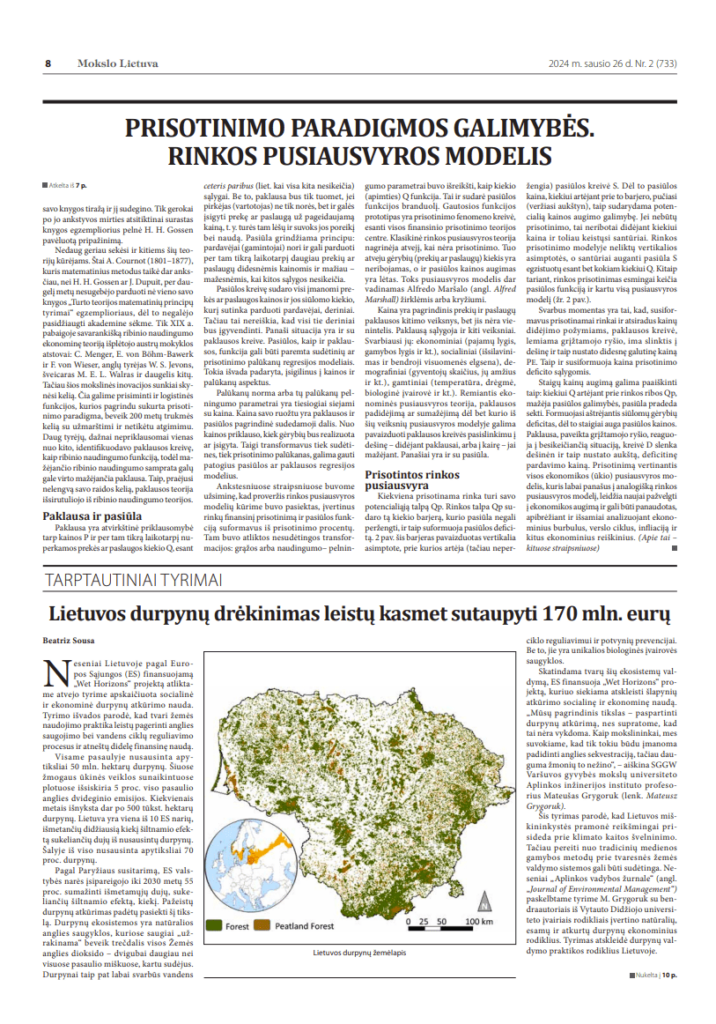A recent case study conducted in Lithuania by the EU–funded WET HORIZONS project calculated the socioeconomic benefits of rewetting peatlands. The findings suggest that sustainable land practices can lead to significant savings by improving carbon storage and water management.
Approximately 50 million hectares of peatlands have been drained worldwide, contributing around 5% of global CO2 emissions caused by human activities, with an additional 500,000 hectares of peatlands destroyed each year. Lithuania is one of the top 10 EU countries with high greenhouse gas emissions from drained peatlands, with approx. 70% of the country’s peatlands having been drained.

Professor Mateusz Grygoruk from Szkoła Główna Gospodarstwa Wiejskiego w Warszawie (SGGW Warsaw University of Life Sciences).
Under the Paris Agreement, EU member states have pledged to significantly reduce greenhouse gas emissions, targeting a 55% reduction by 2030. Restoring degraded peatlands could help achieve this goal. Peatland ecosystems are natural carbon storage systems, holding nearly one-third of the Earth’s soil carbon, twice the amount found in all the world’s forests combined. They also play key roles in water management and flood prevention, and are unique biodiversity hubs.
To encourage the sustainable management of these ecosystems, the EU funded WETHORIZONS project is demonstrating the socioeconomic benefits of restoring wetlands.

Figure 1 from Grygoruk’s publication. A map showing Lithuania’s forests, and both semi-natural and drained peatland forests (State Forest Service, 2021a). The insert map shows Lithuania’s position (red) in the European hemiboreal forest zone (orange).
“Our main goal is to fast-track peatland restoration because we realised that this is not being done. As scientists we know that this is the only way you can increase carbon sequestration, but most people are not aware,” explains Prof. Mateusz Grygoruk from the Institute of Environmental Engineering at SGGW Warsaw University of Life Sciences.
This study shows Lithuania’s forestry industry holds great importance in helping to mitigate climate change.But shifting the focus from traditional methods of wood production to a more sustainable land management system can be a challenge. In recent research published in the Journal of Environmental Management Grygoruk and co-authors from Vytautas Magnus University quantified the economic trade-offs between natural, current, and rewetted peatland forests using various indicators. The research has unveiled crucial insights into peatland management practices.
Draining peatland forests to boost wood production comes at a high cost. Decreased water retention and carbon stock results in an annual economic loss of €308.9 million, equivalent to 6.6% of the Lithuania’s GDP. In contrast, peatland restoration offers long-term benefits for both the economy and the environment. Rewetting drained peatlands could save €170 million annually by improving these ecosystems services.
This value may be even higher, when additional ecosystem services, such nutrient filtration, water purification, biodiversity preservation, among others that were not included in the study, are accounted for. As Grygoruk explains, “When you start thinking about other benefits that come along with proper wetland management, then our estimation is conservative and on the very safe side.”
The study’s findings highlight the advantages of promoting sustainable land management practices and encouraging foresters to participate in peatland restoration. Policies should ensure that there are no financial or social losses, while providing incentives to landowners.
As an example, Grygoruk highlights that “most of the money used for water management, i.e., building new reservoirs or impoundments, could be given to farmers and foresters, who are storing water efficiently. This would reward land manager for doing sustainable forestry or agriculture, while increasing carbon stock in the soil.”
This article, written by Beatriz Sousa, was originally published in Lithuanian in Mokslo Lietuva (Science Lithuania) on page 8 of their February issue.
